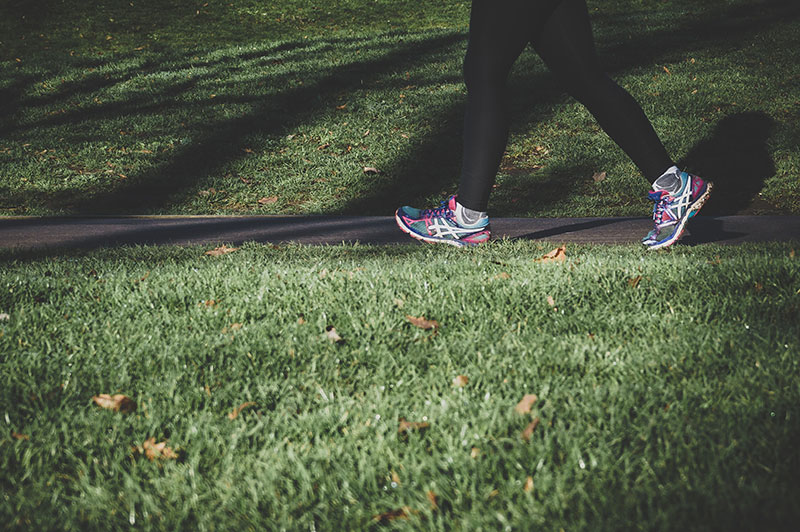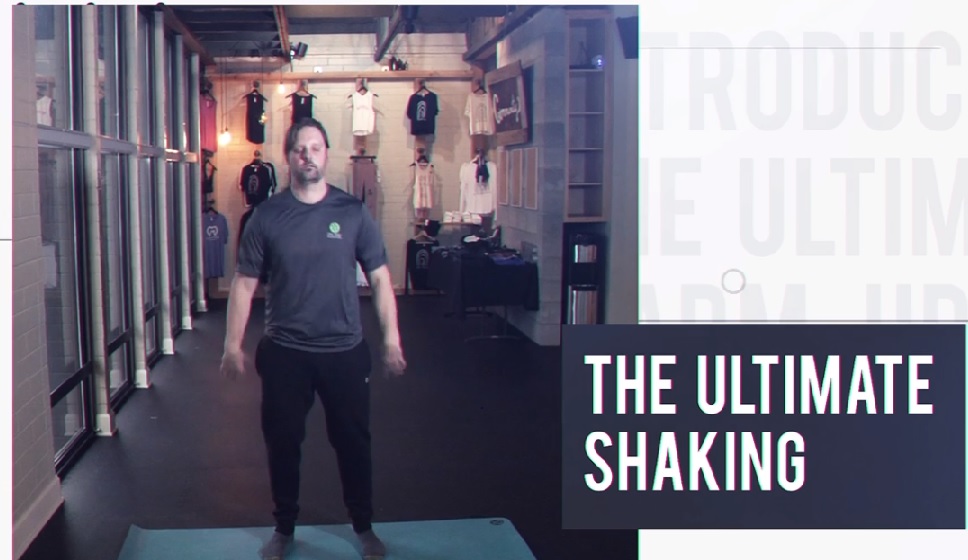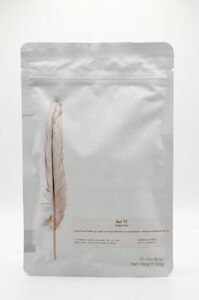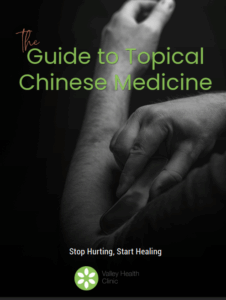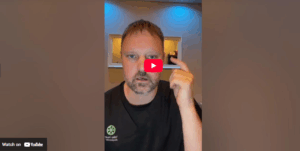Download our Free Instructional Guide
Learn six simple, low-intensity activities for less pain, and more comfort in your body.
While sports acupuncturists spend ample time working with athletes, we also regularly help patients who are living with chronic illness. And one of the key components of successful treatment for these clients is exercise.
Many chronically ill and elderly patients experience tiredness, pain, and even compromised immune systems after a bout of exercise. That’s why, as acupuncturists, we often recommend exercise alternatives.
These alternatives can provide similar benefits as exercise without the negative effects.
Understanding Exercise and Illness
From athletes functioning at peak health to people coping with chronic illnesses, physical activity is a cornerstone of a healthy lifestyle. But rewarding daily exercise looks different for these two populations.
That’s because moderate and intense exercise affects a healthy body and a sick body differently.
How Exercise Normally Works
For an athlete, and for the average healthy person, exercise works in the following way:
- Moderate and high-intensity workouts push the body up to and beyond its limits. Muscle tissue breaks down, and your system enters a state of stress.
- After breaking your body down, your healthy immune and nervous systems kick into repair mode. You begin to recover.
- Once you fully recover, you’re stronger, faster, or more flexible than you were before. You can start the cycle over again, increasing your performance ability each time.
How Exercise Works in Chronic Illness
Exercise doesn’t work the same way for someone who is chronically ill. To understand why you have to understand how the body processes stress.
To our bodies, stress comes in many different forms. We can experience physical stress, mental stress, or emotional stress. We can experience stress that lasts only moments, or stress that lasts years.
But internally, our nervous systems and body structures handle all of those types of stress in the same way. Stress incurred from a chronic inflammation looks much the same to our nervous system as stress from a 10-mile run.
For example, rheumatoid arthritis, type 2 diabetes, and fibromyalgia seem to have dysfunctions in the autonomic nervous system trending toward increased sympathetic nervous system activity. Research also shows that by stimulating the parasympathetic nervous system you will have a decreased inflammation in rheumatoid arthritis, and improves sleep in fibromyalgia (Manuel, et al Koopman)
This higher sympathetic tone never allows the body to fully enter into the recovery phase in order to heal from intense exercise. So what can make a healthy person grow stronger can my another person just hurt more.
Phases of Exercise
There are some basic phases of exercise that can be helpful to understand.
In the first phase of exercise is metabolic changes. Your muscles begin to use up oxygen through glycolysis. This will signal the release of adenosine and nitric oxide which will dilate peripheral blood vessels surrounding the muscles. This sends a signal to dilate upstream vessels. As the body works it will also release CO2 which will act on the hemoglobins and make it easier for them to release oxygen back into the muscles. (Nitric Oxide and Adenosine are two major players in the health benefits of Acupuncture)
The second phase of exercise is autonomic changes. The peripheral dilation of blood vessels in the muscles causes a slight drop in blood pressure which will then stimulate the sympathetic nervous system. This signal is widespread and has many functions. It raises the blood pressure by increasing heart rate and redistribution of blood flow. There are approximately 2 liters of extra blood stored in our veins and organs. The sympathetic system will constrict these tissue to release blood and increase blood flow back to the heart which will allow it to expand and contract harder.
The redistribution of blood goes as follows. The blood flow to the brain will stay the same. There will be an increase in blood flow to the skin and muscles. The key here is that moderate exercise will slightly increase blood to the GI and Kidneys but with intense exercise, there will be decrease blood to gut and kidney and bladder.
The third phase of exercise is hormonal changes. Hormonal changes are slower acting and occur much later in prolonged exercise.
It is important to think about this progression when exercising because we need to make sure the body can tolerate each phase.
Alternatives to Traditional Exercise
Instead of hitting the treadmill or grabbing the weights, people who are chronically ill can use these alternatives to get similar exercise benefits in a controllable manner.
Vibration
When you exercise, you put stress on your bones, muscles, and ligaments. That stress can come from repetitive impact (as in running and jumping) or from repetitive flexion and extension (as in weight-lifting).
For many individuals with chronic illnesses that affect the bones, such as arthritis, and those that affect connective tissue, like inflammatory and autoimmune diseases, this repetitive strain causes more harm than good.
However, your body needs some amount of stress on its bones and tissues in order to maintain and build up density. Density maintenance is especially important for those who have arthritis or early signs of osteoporosis.
The best example of a vibration-type exercise is the shaking and patting you see top athletes do before a race or competition. Shaking out, and patting down, a muscle group or part of your body gets it engaged in much the same way as more strenuous exercise.
Hydrotherapy
Hot and cold water work in similar ways to exercise by triggering vasodilation and constriction.
Applying cold water stimulates the kidneys and adrenal glands and creates vasoconstriction (the shrinking of your blood vessels). It is helpful in pain management because it reduces the amount of blood flow to painful areas.
Ice-cold water is also known to trigger a sympathetic nervous system response (fight-or-flight). This response releases endocannabinoids in the brain, which is the same mechanism behind the euphoria known as “runner’s high.”
On the other side of the coin, hot water creates vasodilation (the expanding of your blood vessels). Vasodilation promotes healing by increasing blood flow. It also improves heart function and has been shown to be helpful in treating COPD.
The simplest form of hydrotherapy is hot and cold showers. This is something you can do at home to engage your nervous system and trigger vasoconstriction or dilation. Cold showers shouldn’t be freezing, but it should be cold enough to feel invigorating. Research shows that even moderately cold temperatures still provide benefits.
If cold showers don’t sound appealing, here’s a tip: start your shower warm, like you normally would. Slowly, turn the water to a colder temperature. This allows your body to get used to the cold water more gradually, rather than shocking your system all at once.
Breathing
Certain breathing techniques can trigger the parasympathetic and sympathetic nervous systems in similar ways to exercise. Other methods can help increase adrenaline without triggering the harmful release of cortisol. Imagine getting into a cold bath: you quickly breath in. Imagine getting into a warm bath: you relax and blow a big breath out.
Breathing techniques can work in two ways: stimulating your parasympathetic nervous system or stimulating your sympathetic nervous system.
When you exhale, you trigger your parasympathetic nervous system, and vice versa. You might notice that you sigh when you’re stressed or you sigh when you feel relaxed. It is a way for your body to comfort itself and express comfort.
On the other hand, inhaling triggers the sympathetic nervous system. When you’re scared you hold your breath. When you are surprised you quickly breath in. Taking an exaggerated inhale sends a signal to your body to trigger the sympathetic nervous system, or the “fight and flight” system.
There’s a lot more to learn about breathing and how you can use breathing techniques to trigger certain responses in your body. To read more, click here.
Movement
When we think of exercise, we think of movement. For chronically ill patients, movement in exercise is more gradual and less intense than for others. But these less intense movement exercises can have the same benefits as more strenuous movement workouts. The key benefit of movement is getting your blood flowing to all parts of your body.
Movement exercises that you can do if you’re chronically ill, without triggering harmful side effects, include:
- Walking
- Stretching
- Lifting low-level weights
- Using exercise bands
- Yoga
How to Exercise with Chronic Illness
If you have an ongoing condition or you know someone who does, it’s important to understand how you should and should not exercise.
Don’t Wear Yourself Out
For most people, the goal of a good workout is to push your body just past its limits, to the point that you feel worn out. That’s when you know that you’re body has been adequate stressed or broken down and with rest will enter into a state of recovery, building up stronger muscles.
But for people who are chronically ill, that “worn-out” point is the danger zone because the increase sympathetic tone impairs the recovery phase. Since your body is already trying to cope with a chronic state of illness, it will struggle to recover from the added stress of working out.
Moderation is Key
So how do you achieve your exercise goals if you can’t push yourself past the point of comfort? The key is moderation.
If you have a goal of walking four miles this week, don’t pack all four miles into one day. Instead, break up those four miles into the smallest increments you can. You might walk half a mile in the morning and half a mile at night, and repeat the pattern every other day.
In this way, you’ll never find yourself worn out, but you can still set goals for yourself and push yourself to achieve more. As your tolerance for exercise increases, you’ll be able to walk longer distances without risking exhaustion.
Good Days and Bad Days
If you’re older, or if you have a chronic illness, you’ll know that some days, you feel healthier than others. Likewise, there may be certain times of the day when you feel stronger and more capable of exercise.
When you’re scheduling your exercise times, try to keep your activities within these “good” times, and stay away from the “bad” ones. Your bad days and hours are times when your body needs all of its energy reserves to rest and heal.
Know the Goal
It’s key to remember your goal when you’re engaging in physical activity, even if it isn’t strenuous work. If you start to feel like going through these exercise alternatives isn’t giving you the benefits you want, it may be time to try another method.
Remember that the point of exercise alternatives is to give you the benefits of exercise like improved blood flow, lowered cholesterol, and enhanced mood.
Do Sports Acupuncturists Work with Chronically Ill Patients?
Just as the name suggests, sports acupuncturists spend much of their time working with high-level athletes.
But the nature of Acupuncture makes it an ideal treatment for not only healthy individuals undergoing acute physical stress but for those who are experiencing chronic physical distress, too.
Upon first glance, treating high-level athletes and treating chronically ill patients may seem worlds apart. However the two methodologies revolve around the same acupuncture tenants.
Reference
Martínez‐Lavín, Manuel, et al. “Circadian studies of autonomic nervous balance in patients with fibromyalgia: a heart rate variability analysis.” Arthritis & Rheumatism: Official Journal of the American College of Rheumatology 41.11 (1998): 1966-1971.
Koopman, Frieda A., et al. “Restoring the balance of the autonomic nervous system as an innovative approach to the treatment of rheumatoid arthritis.” Molecular Medicine 17.9-10 (2011): 937-948.
The Ultimate Warm-Up
A daily exercise routine does not have to be strenuous. Sign up to learn warm-up exercises that will help you stay in good shape, relieve stress and help get the day started on a high note.
About the Author
Willard Sheppy is a writer and healthcare practitioner who seamlessly melds scientific knowledge with practical applications in engaging and authoritative articles. He holds a Bachelor of Science in Environmental Science from Oregon State University and a Master’s in Acupuncture and Oriental Medicine from the distinguished Oregon College of Oriental Medicine.
In his work, Willard skillfully combines his extensive educational background in scientific research with his practical experience as a healthcare practitioner. Willard balances his life with martial arts and cherished family adventures. As a father of three, he often leads his family on camping and hiking trips along the breathtaking Oregon coast.
Connect with Willard on LinkedIn at linkedin.com/in/valleyhealthclinic or learn more about his services at valleyhealthclinic.com. Embark on this journey towards holistic health with Willard!

